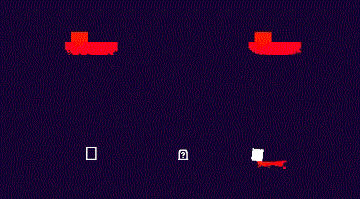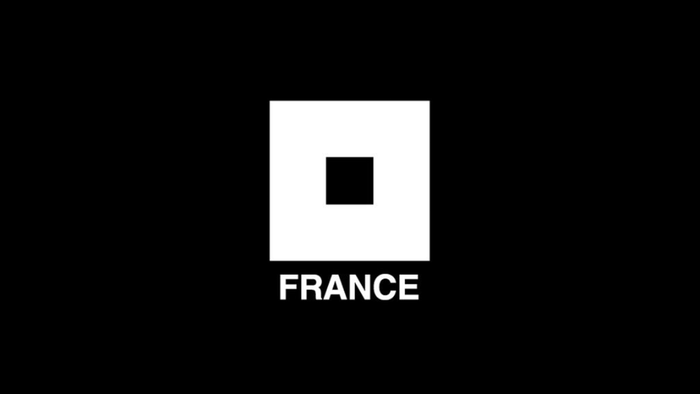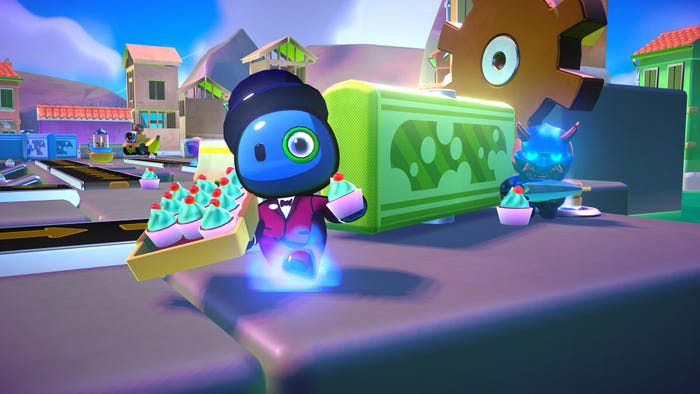
Featured Blog | This community-written post highlights the best of what the game industry has to offer. Read more like it on the Game Developer Blogs.
Zack Bell and Alejandro Hitti talk about their experience working on INK, recently released on Steam. They explain how they managed to develop the game in only 3 months, without a budget.


Zack: I stumbled upon the independent games industry some time in 2009. The number of AAA games that I was interested in seemed to be diminishing. In search of more to play, I found games like Braid, Spelunky, and Super Meat Boy through various media outlets. These games were not only fresh and imaginative, but they were crafted by small teams on even smaller budgets.
With these projects in mind and a recently realized interest in programming, I set out to replicate these developers’ results. By the time that my friends and I had established any form of presence among the growing number of indie developers, it was becoming obvious that none of us had the artistic know-how to create our vision without the help of contracted pixel artists.
I’m going to refer to the next few years as The Dark Ages. There were three of us at the time and we all had distinct ideas about what we should be doing. Couple that with artists who required (and thoroughly deserved) a professional pay grade, we were wasting a ton of money and had too many creative minds for the somewhat small task at hand. We essentially just burnt out over the course of the next two or three years; our minds, our friendships, and our wallets.

Previous Games Zack and Ale Worked On Together
Fast-forward a few more years and the team has dwindled down to…me. I was making ends meet by taking on programming contract jobs here and there. I had formed quite a few more relationships within the community and had attended a few more conferences. The other people who had once worked with me were now back in school or working on other projects. As another source of income, I had decided that I was going to test the alternatives to big Steam releases. I was going to create a game as quickly as possible, using only programmer art, and upload that to smaller distribution portals like itch.io.
Out of this, came INK. INK was a game that I could make by myself. I could complete it in a few weeks and that is what I did. Within three weeks I had prototyped INK using Game Maker: Studio, contacted a composer (Benjamin Burnes), and released a stable build on Itch.io.

Greenlight Data
A positive response followed and people began sharing, streaming, and writing articles about INK. It was very exciting for me and I decided to reach out to one of my original partners, Alejandro Hitti. We met at DigiPen Institute of Technology a few years prior and I knew that his main interest was filling producer and PR roles for small teams. Alejandro and I quickly decided that we would submit INK on Steam Greenlight while simultaneously doubling the content of the game, as well as implementing the Steam API, achievements, and other bells and whistles.
When all was said and done, the INK expansion was released on Steam a few weeks after being Greenlit. The entire process from concept to Steam lasted three months.
What Went Right
1) Game Maker
Zack: I feel like there is still this weird, unnecessary stigma when it comes to using game engines that are accessible to new developers and even young kids. Game Maker specifically seems to take quite a beating when it comes to programming circles and talking about tools/tech.
To me, Game Maker was (and will continue to be) a blessing. Game Maker’s codebase is fairly manageable to the point where I feel that I know it inside and out. It is also powerful enough to get the job done, but isn’t so crammed full of features that I continue to tinker and play for hours. Restriction can be a good thing. Given Unreal, Unity, or a custom-made engine, I would probably still be tinkering with the way that the paint works rather than writing a postmortem.
I am not a control freak when it comes to my code. I don’t mind working around the lack of a feature. I know that at this time, I am the only one who will need to see, read, and understand the webs that I weave. Until one or all of these things change, Game Maker will continue to be my tool of choice.

Alejandro: I come from a school where we are required to write our own game engines from scratch, instead of using existing ones, since the second semester. At my school, DigiPen Institute of Technology, I am constantly asked why I choose to use GameMaker to develop my professional games instead of making my own engine or using a “more powerful” engine, such as Unity or Unreal. I have had some experience with both of these engines and while they are amazing for 3D, I feel like they are still lacking functionality and ease of use when it comes to 2D game development.
Though it is true that one of the main reasons why I use GameMaker is that Zack is a wizard at it (we are working on getting him a robe and a staff), I very much enjoy developing in it. I took upon the task to set up the Steam API integration for INK as well as code in all stats and achievements that can be found in the game. I also went ahead and fixed bugs as they showed up to help lighten Zack’s load and let him focus on designing the remaining levels and boss fights. What I found is that GameMaker is a very intuitive engine that is often overlooked because of its “drag-and-drop” features that are targeted towards people who are learning game development. Often people dismiss it because of this fact, ignoring that you can develop using code blocks and write in GML, which is a language similar to Java and C++, and write code without any extra help from the engine. This is how all the code in INK works.
Lastly, I believe that GameMaker’s level editor is the best out there, especially for tile-based design, and it has a ton of other powerful features for 2D, such as a robust Sprite editor, making it the engine of choice for us until we decide to delve into 3D games.
2) Programmer Art
Zack: As mentioned early, The Dark Ages were…well, dark. I couldn’t afford to pay talented pixel artists to help me with my project(s) and I didn’t yet have a reputation that would allow me to work with professionals with only profit share to keep us interested. INK is a game that requires none of that. All of the game’s art (well, 95% of it) is created programmatically. I created all of the in-game art myself; from the paint spray to the way that the player moves and wiggles.
This allowed me to work very quickly without relying on anyone else. It also allowed me to keep the budget at zero (aside from my personal expenses over the course of the three months).



3) PR/Marketing
Zack: As an indie developer, visibility is everything. The market is continuously getting more saturated as the barrier for entry gets lower. Tools like Game Maker and Unity cause this (as well as the publicity of success).
I knew that bringing Alejandro on board would mitigate this issue. We have spent countless hours talking about different approaches to this in the past and our press list has grown to be quite extensive.
For INK, we knew that the game would live or die by the hand of YouTubers and streamers. The game is fast-paced, difficult, and easy to watch/listen to. This makes it a sure fit for Let’s Plays and videos of that nature. The best way to do this is to send Steam Keys to people who you assume will both play your game and get you more sales than you’d have otherwise. We compiled a list of YouTube/Twitch users that play games and organized them by number of subscribers. We then take that list and have to determine how many subscribers a person needs for us to recoup our free copy, as well as make a profit from the viewers. In a perfect world, that number would be one. If that were the case, we could send free copies to everyone and we would have at least as many sales as we did keys. Sadly, that is not the case. We still decided on what we thought was a fair/low number and ended up sending out several hundred keys. We did the same for traditional media outlets.
It has only been two full days (as of writing this), but this plan seemed to have worked. The most noteworthy being a video by YouTube personality, Markiplier. His video went up the night of release and has had over one million views within the first 48 hours.

INK After 2-3 Hours of Development
Alejandro: As Zack said, we got some great coverage the first few days after release, the most notable ones being Kotaku, IndieGames.com and Markiplier. This coverage helped bump our sales to the point where Valve put us on the Steam Main Capsule during the first week, which also helped a lot with the success of the game. Though luck and having a quality product are definitely factors that played in our favor, I believe none of it would have happened if we had not worked really hard in spreading the word. Zack has been tweeting about the game ever since day one, which helped build our community and it got a lot of eyes on our product early one, which helped us polish as many kinks as we could before release.
A lot of indie developers think that press should come naturally after you make a good game. Unfortunately, that is not the case. I spent 3 days compiling a list of over 500 contacts from more than 150 press outlets, as well as over 100 generic website contact emails. Three days before release, I emailed every single one of those contacts, alongside 400 Youtubers and Streamers from an online list, to achieve a total of around 1000 emails sent, of which 350 got Steam Review Keys. We are still being contacted by about 20-30 people every day asking for keys, which we provide after we confirm their identities, since there are a lot of press impersonators that re-sell Steam keys nowadays.
4) Soundtrack
Zack: The INK demo that originally launched on itch.io several months ago only included one track. This was a track provided by a friend, Benjamin Burnes, via Twitter (you can still hear that track in the Greenlight trailer). During that first month of demo sales, I was contacted by a guy named Vincent Rubinetti. Vince was somewhat new to the indie game music scene and wanted to put some sound effects and music to our initial trailer to be used as a portfolio piece. A week or so later, Vince shot me a sample so that I could see what he had included in his portfolio. I liked it quite a bit and had yet to decide on our full time composer and sound designer. Vince gladly joined the team soon after.

Vince quickly churned out six unique tracks and a few dozen sound effects in roughly two weeks. The sound design as a whole has helped push sales and the Deluxe Edition that includes the OST has been a hit.
5) Promotional Art
Zack: Promotional Art for a game that doesn’t itself include much art is a little strange. However, I am currently working on another project with Fellipe Martins, and I knew that he would give the game a professional look even given our short timeline and limited budget.
Luckily, we got him on board when we did because he became a priceless asset when it came to art needed for Steam trading cards, Steam badges, and Steam achievements. As well as the overall look of the store page and Twitter banners. He even included some HD wallpapers in our Deluxe Edition.
For me as a developer, selling my product becomes more and more difficult as time passes. It was Fellipe’s promotional art that gave the game its professional look and polish that allowed me to feel comfortable selling it again.

What Went Wrong
1) Title
Zack: This one sounds a bit silly, but I am not proud of the title, INK. It isn’t creative and it’s a common word in the English language. Googling INK is a nightmare! It definitely isn’t the right path for search engine optimization. Until it became somewhat successful, even searching for INK on Steam didn’t return INK as the first result.

INK was chosen early on, prior to deciding to shoot for Greenlight and a full release. By the time that I took the project seriously, the name had been shared enough that I felt it was necessary that it stay the same.
2) Cloning
Zack: Open development can often lead to cloning. I took this a step farther; again, because I didn’t realize that I would flesh out INK into a second, expanded release. Money was tight after the initial itch.io release, so I decided that I would put the source up on the Game Maker Marketplace (I had made decent money doing that in the past). People were into it and I got a dozen or so emails from people thanking me for teaching them new things and being open about my approach to INK.


These are not INK
However, given a few more weeks on the market, INK clones started popping up left and right. The issues were resolved and I updated my posting to clarify that the content and the rights to the project weren’t what was being purchased, but this period was troubling and hindered our timeline slightly.
3) Sporadic Design
Zack: When Greenlit, I went through a rough patch where I believed that INK needed to be much “bigger” and much “better” to become a success on Steam’s marketplace. Alejandro and I went back and forth several times about the overall design and structure of the game. Some of our early players felt that the paint mechanic lent itself best to a game where exploration was the focus. To some extent, I still agree with that statement.


Left: Metroidvania INK ----- Right: Lasers!
The team spent maybe two or three weeks designing what was essentially an open-world, Metroidvania version of INK. It was a completely different game, but it was great in its own way. The player would start their journey without any ink abilities at all. The player would stumble around in the dark, use ink pads to gain temporary abilities and slowly discover more and more of the world.
In the end, we decided that it was both safer and smarter to stick with what had a positive response to begin with; to us, putting our fast-paced platformer through the Greenlight process and then swapping it for a moody exploration game seemed wrong. Also, this design iteration almost doubled our timeline. I definitely learned to stick with my gut and my instincts. The INK that is available now is the INK that I am proud of.
That doesn’t mean that the team hasn’t talked about doing an open-world sequel!


Left: INK Pads with Limited Use ----- Right: INK Ball
4) Self-Imposed Deadline(s)
Zack: INK was an experiment. I wanted to make something quickly and I wanted to make something with a small budget/team. After the wishy-washy design period, I really wanted to push things. I wanted to get it out the door as quickly as I did with the demo; almost to the point that it was detrimental to the product. I feel that by the time we shipped, we had found a good balance of scope/mechanics and our timeline, but I still feel somewhat guilty about this. A few mechanics that we really liked had to be cut because they didn’t seem feasible given our “deadlines”.

Multiplayer Color Select
However, we’re hoping that the positive reviews and responses mean that INK is worth sinking more time into. We have discussed an additional world as well as a multiplayer arena mode. Both of these features were on our initial to-do list. If these features excite you, please let us know!

Testing Multiplayer with One Controller
5) Ignoring Potential Target Audience
Zack: Again, INK was made with certain goals in mind. I never really sat down and designed the game “for” anyone. There was no target audience. I just made the game that I would want to play and (by mistake) I made the game play how I would play it. Right out of the gate, we ran into some issues with this, post-release.
The game had only been up an hour or two and the review count was low. When the review count is low, every negative review counts. At one point, half of our reviews were negative reviews that simply stated that we didn’t have a decent options menu that allowed for WASD support. That thought simply never crossed my mind after the first week or so of development. I quickly got the movement code working with gamepad and I added arrow key controls in case I didn’t have a gamepad lying around. We quickly added WASD support (within two hours of release) and a lot of those reviews changed into happy thank you notes, but I think that we got lucky there!
If there is something to complain about, someone will complain about it! Guaranteed!

Switch Blocks
INK Next Steps and Unannounced Project
Alejandro: Working on INK has been a pleasure. Everyone in the development team is very happy of the end result and we all enjoyed working with each other. It is a weird occurrence when a team of four people has so much synergy, especially when it is made of people from all over the world, most of which have never met in person. We all share a feature though: We are very perfectionists and we iterate on our work until we are satisfied, which helps produce quality and professional looking content.
We have been overwhelmed by the response INK has had. This only motivates us to keep supporting the game a little bit longer, adding features we had to cut during development (Multiplayer and difficulty levels come to mind) as well as adding some extra features players have been requesting, such as an options menu and a speedrunning mode. Other features we are planning on adding later on are a level editor, to allow people to create custom content, and integrate leaderboards to keep track of the fastest players.
As we stated in the beginning, INK was a small side project we worked on since it got Greenlit and we knew we could finish it in a few months. However, we have been working on a bigger project at the same time, alongside two amazing artists, which we are really excited about. The project will be announced in the next few weeks, once we flesh out some more details, but I guess I can give you a little teaser: It’s going to be a game that involves collecting cards to battle enemies in top-down procedurally generated dungeons.

SPOILER ALERT!
If you wish you be up to date with INK additions or know more about our next project, please follow us at @AleHitti and @ZackBellGames on Twitter, since we will be posting about that a lot.

Left: Zack Bell ----- Right: Alejandro Hitti
[Zack Bell is the Programmer and Designer for INK. Alejandro is the Producer and Marketing Director. Both have been working together on multiple projects for 3 years now. Their first time working together was for a student game at DigiPen Institute of Technology called “The Afterworld Chronicle”.]
Data Box
Developer: ZackBellGames
Release Date: August 5th, 2015
Platforms: Windows, Mac and Linux. Plans for PS4, XBOX One, WiiU and 3Ds.
Team: Zack Bell (Programming/Design), Alejandro Hitti (Production/Marketing), Vincent Rubinetti (Music/SFX), Fellipe Martins (Concept/Promotional Art)
Length of Development: 12 weeks
Budget: N/A (outside of living expenses)
Development Tools: Game Maker Studio
Original Title: Paintformer
Square’s Name: Roy G. Biv
Read more about:
Featured BlogsAbout the Author(s)
You May Also Like








